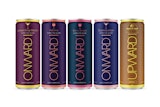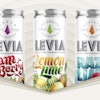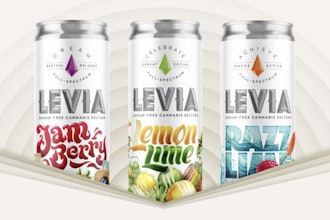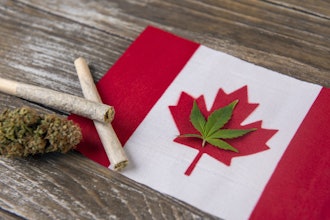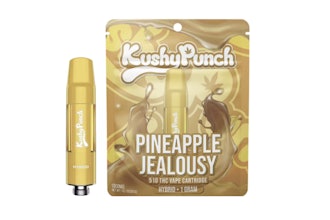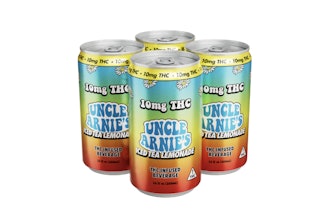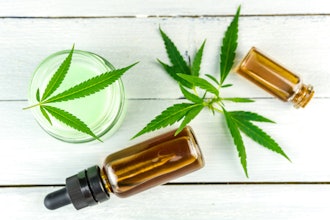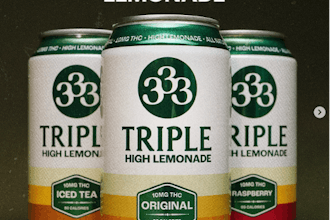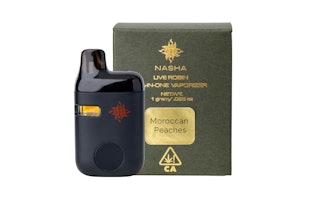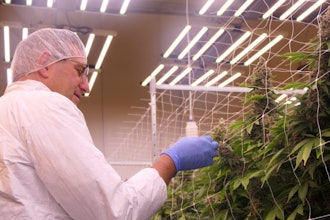
Recent years have seen exciting advances in cannabis products, with new formulations constantly entering the market. As a longtime innovation leader in the ingredient formulation industry, I am most excited about new consumer products and delivery systems honing in on the therapeutic value of cannabinoids, terpenes and adaptogens in the hemp plant. In particular, the emerging hemp and cannabis beverages market offers an exciting platform for innovation to deliver safer, more efficacious therapeutics.
While constant innovation makes the cannabis industry so unique, a few product categories dominate the market.
Inhalable Cannabis
The most familiar forms of cannabis are smokeable or vapeable products. Cannabis flower makes up about 40% of sales, while vaporizers are the second most popular product category with about 23% of sales. New forms of inhalable cannabis, such as cannabis nebulizers, are expected to hit the market soon, too, expanding this category even more by taking advantage of the improved bioavailability and efficacy that water-soluble cannabinoids, terpenes and adaptogens bring to the formulation table.
Despite the overall popularity of smokeable and vapeable cannabis, many consumers, especially those seeking therapeutic benefits, are unable or unwilling to choose inhalable cannabis products as their primary delivery vehicle.
Topical Cannabis
Cannabinoid products meant to be applied directly to the skin have also gained popularity recently. Research shows us that a significant portion of the CB2 receptors in our body are located in the skin, creating a fascinating therapeutic platform for topical applications.
Edible & Drinkable Cannabis
Cannabis consumables, such as gummies, chocolates, mints and beverages, make up one of the most exciting markets in the cannabis industry. In 2022, the cannabis edible market was valued at over $8 billion and is expected to see a 16.5% compound annual growth rate (CAGR) over the next decade. The cannabis beverage industry is valued more conservatively, at just over $915 million in 2021, but is expected to see an astounding CAGR of 54.31% over the next several years.
Both cannabis edibles and beverages are excellent avenues for cannabinoid ingredient manufacturers interested in following the growth in the industry, but I am particularly excited about drinkable cannabis. Cannabis beverages are potentially the most approachable form of cannabis to both new and seasoned consumers, and the advancements that make high-quality cannabis beverages possible show an incredible technological leap that cannabis manufacturers can leverage in several other impactful applications.
Difficulties in Formulating Cannabis Drinks
One of the most significant stumbling blocks standing in the way of the cannabis beverage industry is that it is relatively complex to formulate effective, appetizing cannabis drinks.
All cannabinoids, including popular compounds like THC and CBD, are lipophilic; they bond readily with fats but not water. This lack of true cohesion poses a couple of significant problems for cannabis beverage manufacturers.
First and foremost, the lipophilic nature of cannabinoids makes it extremely difficult to formulate drinks that contain them. Oil and water don’t mix, so many cannabinoid beverages have a less-than-appetizing oily texture or milky appearance. The more cannabinoids included the more complex the formulation challenge, especially If the formulation goal is a clear, stable, good-tasting beverage.
The fact that cannabinoids naturally bond more easily with oil than water also poses a problem regarding bioavailability and absorption. The human body is mostly water, so it is more difficult to absorb lipophilic cannabinoid compounds. Only 4-12% of lipophilic cannabinoids are estimated to be absorbed into the body via ingestion.
Accordingly, in a cannabis or hemp oil tincture containing 50 milligrams of total cannabinoids, only 2 to 6 milligrams are absorbed into the body and used. Improved bioavailability is a key performance indicator (KPI) for innovation in cannabis beverages.
Other KPIs for formulating cannabis beverages include bitterness reduction to create stable, sustainable flavor profiles and formulating for clarity or transparency. Recent technological advances have made cannabis-infused beverages more appetizing, effective, and feasible than ever.
Nano Versus Truly Water-Soluble Cannabinoids
Two of the most popular methods for creating cannabis beverages are the use of nanotechnology and the use of genuinely water-soluble compounds.
What is Nanotechnology for Cannabis?
Simply put, cannabinoid nanotechnology refers to making oil-based cannabinoids into microscopic drops that form smoother, more stable emulsions in water-based beverages.
While this technique can create a slightly more bioavailable mixture and appealing product, it has significant shortcomings. Nanotechnology utilizes cannabinoids in their lipophilic form, which means it is inherently limited in its overall bioavailability. Additionally, cannabis drinks created with nanotechnology will still settle and break apart over time, resulting in products with a relatively short shelf life.
What Are Water-Soluble Cannabinoids?
Water-soluble cannabinoids dissolve fully in water and leave behind no textural trace — just the active ingredients. True water-soluble cannabinoids are processed differently in our bodies than their lipophilic forms.
Post digestion, oils are processed through the liver before exiting the body. The liver cannot process oils rapidly, leaving concern for accumulation in the liver and liver toxicity. Water-soluble cannabinoids are processed through the kidneys before exiting the body through the urinary tract. In this form, the body takes what it needs and discards the rest, leaving no concern for oil accumulation or toxicity in the liver.
3 Benefits of Truly Water-Soluble Cannabinoid Ingredients
Synergy Life Science has developed one of the first genuinely water-soluble cannabinoid ingredients. The improved safety, efficacy, and new product opportunities these ingredients offer consumers across various products and applications, such as tasty, clear cannabis beverages, transparent gummies, and therapeutic topicals, are extremely exciting.
1. Water-Soluble Cannabis Compounds Are More Bioavailable
As a results-driven, scientifically rigorous cannabis ingredient manufacturer, my company is incredibly excited by the level of bioavailability we have seen in truly water-soluble cannabinoids.
As previously mentioned, traditional oil-based cannabinoids are minimally active, while water-soluble cannabinoids can be up to 100% active. With water-soluble cannabis ingredients, the body absorbs most, if not all, of the active component, greatly enhancing the consumer experience while creating a more efficacious and cost-effective drink.
2. Increase the Shelf Life of Cannabis Beverages With Water-Soluble Cannabinoids
Truly water-soluble cannabinoids dissolve entirely into water, creating a stable and long-lasting product. Because the cannabinoids are water-soluble, they dissolve into the drink and will not settle, separate, or spoil like cannabis beverages that use lipophilic cannabinoids. Water-soluble cannabinoids help create inherently stable and much more cost-efficient beverages that won’t spoil on the shelf.
3. Water-Soluble Cannabis Ingredients Improve Consumer Experiences
Finally, water-soluble cannabinoids also create some of the most appealing cannabis drinks on the market. They leave behind no texture or flavor and create a formulation pathway to high-quality cannabis beverages in addition to being much more effective than oil-based drinkables.
Water-soluble cannabinoids will help the cannabis beverage industry reach its full potential by creating more efficacious, tasty, visually appealing, and cost-effective cannabis drinks. These innovative ingredients exemplify the technological innovation present in the cannabis industry, and I am excited to see what consumer product manufacturers can achieve with these novel, truly water-soluble cannabinoids.
